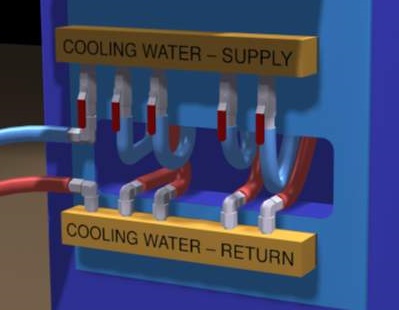To start this off “RO” stands for Reverse Osmosis. This is a filtration process that uses a semi permeable membrane to filter out larger particles in the water. It removes most minerals. “DM” stands for Demineralized Water. It is also called Deionized water. It also removes the minerals from the water. As the name implies the ions are removed. The pro for both is they produce pure water.
AWS has a standard for water used in resistance welding equipment:
AWS Standard J1.2M/J1.2:2016 Guide to the Installation and Maintenance of Resistance Welding Machines
It states the following water requirements:
Water Quality:
1. Maintain the pH between 7.0-9.0
2. Chloride maximum content of 20 ppm
3. Nitrate maximum content of 10 ppm
4. Sulfate maximum content of 100 ppm
5. Solids maximum content of 250 ppm
6. Calcium Carbonate maximum level of 250 ppm
7. Water resistivity greater than 2,000 ohm-cm
The water should be free of contamination such as algae growth and slime. Water which has an odor or is cloudy requires attention. Do not use water additives that will attack the circulation components including the rubber hoses. The water hoses should not contain graphite or carbon black which could make them conductive.
Deionized water should not be used. It can be corrosive to the water system and can lower the resistivity of the water.
Dirt and debris such as leaves blown into the water tower can lead to restricted water flow and overheating of the welder components. Strainers and filters should be check frequently.

COOLING WATER MANIFOLD
The above highlighted statement would eliminate “DM” Demineralize water use in resistance welding. The lack of ions in the water make the water ion hungry and the water will be aggressive and attack the various components in the welding system. “RO” systems also removed minerals and the water is ion hungry and would be aggressive and attack the components of the resistance welding system.
The cons for both "RO" and "DM" water are they are so pure that they are ion hungry which is bad for the resistance welding environment.
Water that meets the AWS Standard would be a better choice than either “RO” or “DM” treated water.
Reference: AWS J1.2M/J1.2:2016 Guide to the Installation and Maintenance of Resistance Welding Machines

